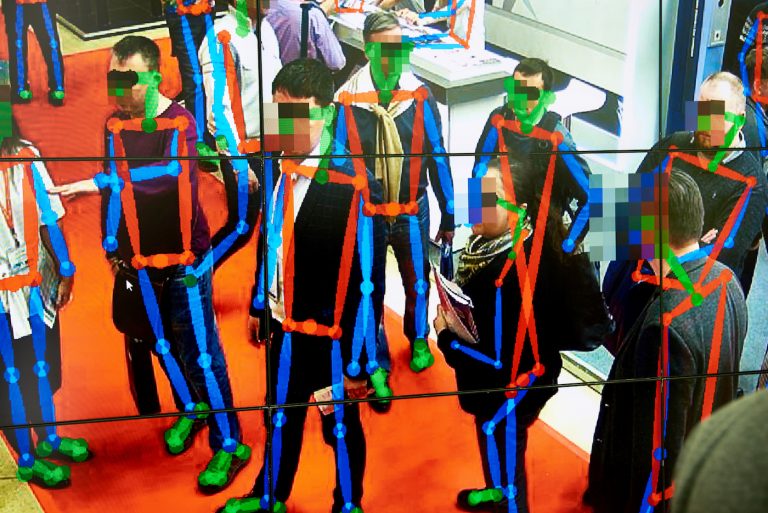According to Health and Safety Executive In the UK
- 6 million people suffer from a work-related illness
- 142 workers killed at work (2020/21)
- 693,000 working people sustain an injury at work according to the Labour Force Survey
- 65,427 injuries to employees reported under RIDDOR
- 8 million working days lost due to work-related illness and workplace injury
- £16.2 billion estimated cost of injuries and ill health from current working conditions (2018/19)
AI-based Computer Vision solutions such as IRIS can predict and prevent workplace accidents significantly.
How do the AI Computer Vision Systems improve safety and reduce accidents?
Computer Vision AI Systems are very efficient and accurate in capturing all near misses at the workplace. It is impossible to capture near misses without AI systems as most near misses go unnoticed and unreported.
A near miss is a leading indicator to an accident. If one can capture all the near misses accurately, then a HSE person can easily do a root cause analysis and change the process or work rules to prevent the near misses from reoccurring and thereby preventing injuries and accidents.
Computer Vision systems can also prevent accidents from happening by raising a real-time alarm in less than 1 second of event occurring. These alarms can make a significant difference in preventing accidents from happening in real time.
Here some of the most common use cases for Health and Safety using AI.
MHE / Forklift safety
Forklifts alone accounted for 1,300 UK employees being hospitalized last year with serious injuries. Unfortunately, the number is rising due to significant growth in e-commerce, and warehouse space, across the UK and Europe.
Working at height
AI and computer vision systems can monitor and detect PPE and correct equipment usage, over-crowding on scaffolding, and even falling objects. In picture below the AI system is checking real time if harness is applied or not.
Machine Guarding and Process Compliance
Computer vision and AI systems can detect employees that are in the hazardous zone and provide real-time warnings. AI system can also easily detect a non-compliance such as people not following a laid down process.
Monitoring use of PPE
Employers have duties concerning the provision and use of personal protective equipment (PPE) at work. AI and computer vision systems can measure compliance and ensure the right PPE equipment is used to protect the user against health or safety risks at work. This includes safety helmets, gloves, eye protection, high-visibility clothing, safety footwear, and safety harnesses.
Fire / Spills / Broken Glass Detection
AI Systems can easily detect a fire, an oil spill, broken glasses, obstructions to fire safety doors etc and raise a real time alert. The fire detection happens through visually identifying a fire and can supplement existing fire detection system as it can raise an early warning and also send details of the fire in real time. However, it is not full proof as it cannot detect fire that is not visible.
Lifting Equipment / Cranes
Computer vision systems can detect the type of lifting equipment used and identify different types of loads. They can monitor the work the lifting equipment is used for and provide real time warnings for employees walking/standing under suspended load.
Covid Use Cases
It is easy to build custom use cases very quickly using AI Computer Vision System. These can be used to monitor particular requirements that are unique. Here is an example of a use case to monitor social distancing at workplace.
Anonymisation
Anonymisation blurs the visual identities of ALL recognisable people in the notification image, not just the two who violated the social distancing rule in this use case example. It can also anonymise number plates or any other visually identifiable data set. Anonymisation use case can address employees concerns on privacy and help meet GDPR requirements particularly when the cameras are looking at public space.
AI Systems are contributing to evolve Health and safety.
- HSE staff can reduce time on manual auditing and spend time on creating change
- Changes made by Health & Safety staff can be measured for real impact based on trend data for before & after.
- Decision made on quantitative data not just qualitative data
- AI Systems capture all the Health and Safety data 24*7. No human involvement in capturing, analysing and reporting the data.
- No Human Biases & No Human Errors.
AI Systems can truly enable enterprises to go for Zero Accidents at workplace. They make Health and Safety proactive. AI systems help Instigate and Measure Change and move from Audit to anticipation & action.
Additional Factors to consider
Big Brother is watching you
- Balancing privacy vs providing a safety net
- Some cultures make this difficult
- A significant “Buy-in” process is required
Regulatory Requirements (GDPR)
- Anonymisation of data / images
- Control and location of data / images
- Standard IT security access
Tools and Use cases such as anonymisation can overcome the privacy concerns and help meet GDPR requirements.
Other advantages of AI Computer Vision systems
- Local Deployment
AI Computer Vision systems are deployed at workplace locally which ensures that no video data goes out of the customer location. This ensures privacy and data security.
- Re use existing Infrastructure
Most workplaces have existing CCTV infrastructure. AI and computer vision solutions can be easy and quick to deploy as they can get the feed from existing cameras. They can take feed from any cameras (Analog, Legacy, IP Cameras, Fixed or on Vehicles and Machines).
This makes the AI solution a low-cost solution with little capital investment.
- Run multiple Use cases on same camera.
Customer can run a number of use cases including custom uses cases on each camera feed and can get significant value from these systems. Customer can also choose to have different business rules for different cameras for same use cases thereby customising the AI capability to meet their unique requirements.

